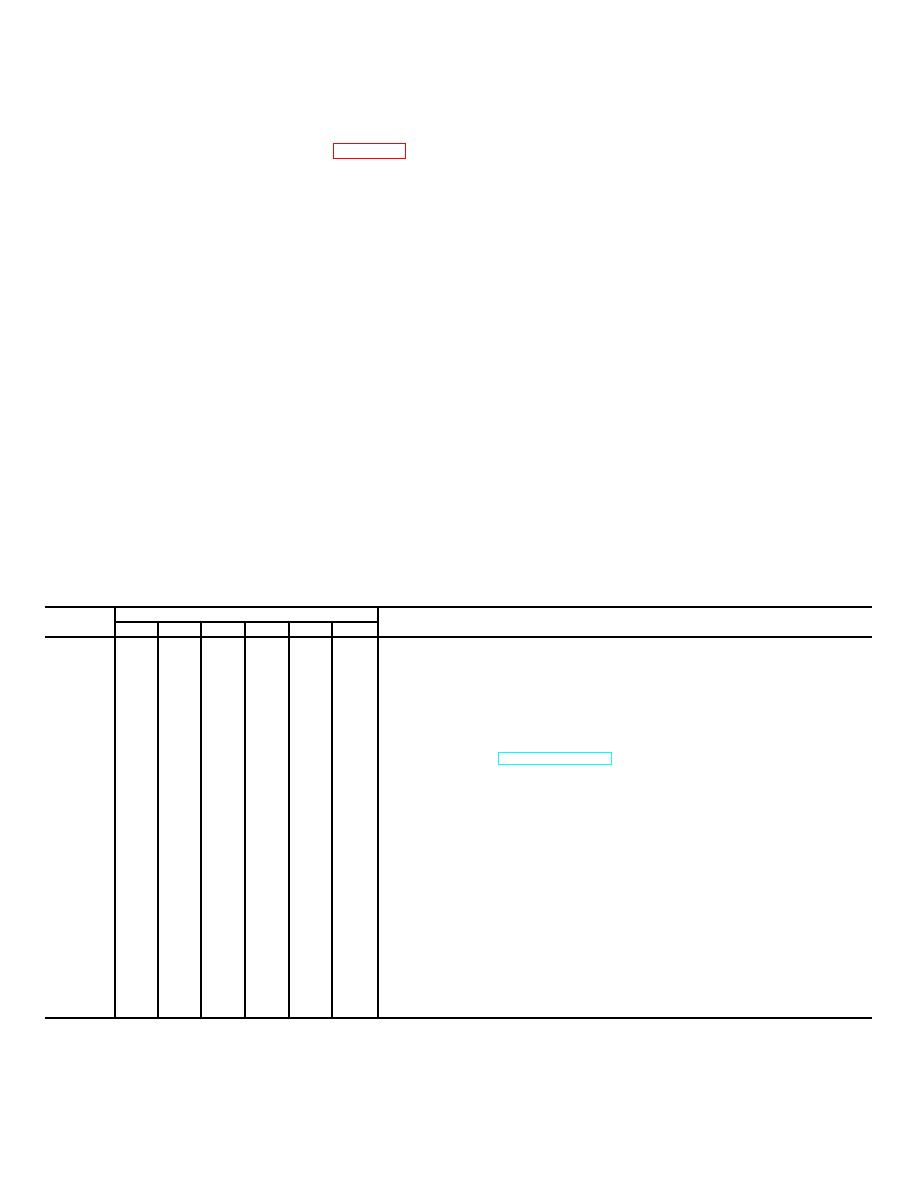 |
|||
|
|
|||
|
Page Title:
Table 4-1. Organizational Preventive Maintenance Checks and Services |
|
||
| ||||||||||
|
|
 TM 10-3930-632-12
e. You should know how fluid leaks affect the
(6) Do the (MI) checks and services when
the mileage of the vehicle reaches the amount listed.
status of your equipment. Learn and be familiar with the
b. If the fork lift truck doesn't work properly and
following definitions of the types/classes of leakage.
Leadage definitions for PMCS are:
you can't see what is wrong, refer to table 4-2 for
CLASS I
Seepage of fluid (indicated by
troubleshooting instructions.
WARNING
wetness or discoloration) not great
enough to form drops.
Drycleaning solvent SD-2, used to clean
CLASS II
Leakage of fluid great enough to
parts, is potentially dangerous to personnel
form drops but not enough to
and property. Do not use near open flame
cause drops to drip from the item
or excessive heat. Flash point of solvent is
being checked/inspected
138F.
c. Make cleanup a part of your preventive
CLASS III Leakage of fluid great enough to
form drops that fall from the item
maintenance. Dirt, grease, oil, and debris may cover up
being checked/inspected.
a serious problem. Use drycleaning solvent (SD-2) to
CAUTION
clean metal surfaces. Wipe off excess grease and
Equipment operation is allowable with minor
spilled oil. Use soap and water when you clean rubber
leakage (Class I or II).
Of course,
or plastic material.
d. Watch for and correct anything that might
consideration must be given to the fluid
capacity
in
the
item/system
being
cause a problem with the equipment. Some things you
checked/inspected. When in doubt, notify
should watch for are:
your supervisor.
(1) Bolts, nuts, and screws that are loose,
When operating with Class I or II leaks,
missing, bent, or broken.
continue to check fluid levels as required by
(2) Welds that are bad or broken.
the PMCS.
(3) Electric wires and connectors that are
Class III leaks should be corrected before
bare, broken, or loose.
releasing equipment for operation.
(4) Hoses and fluid lines that lead, or show
signs of damage or wear.
Table 4-1. Organizational Preventive Maintenance Checks and Services
Q-Quarterly
S-Semiannually
A-Annually
B-Biennially H-Hours
M-Miles
ITEM
INTERVAL
ITEM TO BE INSPECTED
NO.
Q
S
A
B
H
M
PROCEDURE: Check for and repair, fill or adjust as needed.
NOTE
Perform Operator/Crew PMCS prior to or in conjunction with Organizational PMCS if:
a. There is a delay between the daily operation of the equipment and the Organization
PMCS.
b. Regular operator is not assisting/participating.
ENGINE OIL
250
1
Drain oil and replace engine oil filter. Refill with enough oil to bring oil level up to FULL
mark on dipstick (ref. LO 10-3930-632-12).
FUEL FILTER
250
2
Clean bowl and element.
ENGINE TUNE-UP
3
250
a. Adjust or replace ignition points (point gap should be .022 inch).
250
b. Check spark plugs and replace as necessary (gap should be .030 inch).
250
c. Clean PCV valve.
250
d. Check timing of engine.
VEE BELTS
4
250
Check belts for proper tension. Should be 1/2 to 3/4 inch deflection at point midway
between pulleys under approximately 25 pounds of force.
BATTERY
250
5
Check specific gravity and charge as necessary. Clean terminals and insure all
connections are tight. Inspect battery for corrosion. (Ref. TM 9-6140-200-14.)
BRAKE AND INCHING MASTER CYLINDERS
250
6
Check level of fluid. Fluid should be within 114 inch of top of reservoir.
STEERING DRAG LINK AND TIE ROD
7
250
Lubricate/check steering mechanism to insure it operates freely without binding.
Change 1 4-3
|
|
Privacy Statement - Press Release - Copyright Information. - Contact Us |